Hey everyone, welcome to FutureProof - my Tech and Sustainability Digest.
So, I’m trying something new with today’s edition of the newsletter - I’m sending it out a week after the last edition! I was publishing the newsletter on a roughly two week cadence, but it was getting long and wordy, so I polled readers in last week’s edition, and the majority who took part in the poll voted for shorter weekly posts, so here we are.
I’ll run another poll at the end of this newsletter, and if you prefer this format, let me know, or if you want me to revert to every two weeks, choose that option. Now on with the newsletter!
And as always this newsletter is dedicated to surfacing and sharing good news stories across tech and sustainability. If good news sounds like something you need, read on. And please share this newsletter with anyone/everyone else you feel could do with a little cheering up!
Climate News

🔥 No Insurance, No Capitalism — Allianz Exec’s Stark Climate Wake-Up Call
Günther Thallinger, Allianz board member and sustainability chair, in a LinkedIn post just laid it out cold: as climate risk escalates, capitalism’s support beams - insurance, finance, credit, are quietly buckling. Entire regions are becoming uninsurable. If your house can’t get cover, you can’t get a mortgage. No insurance = no investment = no functioning economy. This isn’t alarmism, it’s maths. Now maybe folks will sit up and pay attention!
Key Highlights:
Insurance markets are already pulling out of high-risk areas (e.g. wildfires in California).
Climate-driven risk is making key financial assets - homes, roads, ports, uninsurable, unfinanceable, and ultimately, worthless.
The only viable fix: cut emissions now by rapidly scaling mature clean tech (solar, wind, batteries, etc).
Why This Matters: This isn’t about polar bears anymore, it’s about whether banks, pensions, and capitalism itself survive the climate crisis.
Kismet: In 2023, climate-related insurance losses hit $140 billion, but here’s the kicker: only 40% of those losses were actually covered. The rest? Straight to the public and private abyss. 👉 Full story here

🌳 Africa’s Great Green Wall: One Billion Trees and Counting!
In a rare and wildly underreported win for climate and humanity, Africa’s Great Green Wall has officially passed the 1 billion trees milestone. Stretching across 8,000 kilometres from Senegal to Djibouti, this audacious reforestation project is literally reshaping the Sahel, turning desert back into fertile land, one acacia at a time.
Key Highlights:
Over 1 billion trees planted across 30+ million hectares.
The project spans 11 countries and aims to restore 100 million hectares by 2030.
Already helping reduce desertification, improve food security, and support local livelihoods.
Why This Matters: It’s not just about planting trees, it’s about reversing collapse, empowering communities, and proving large-scale nature repair actually works.
Kismet: The Great Green Wall has created over 350,000 rural jobs, climate action as economic policy, not just an emissions stat. 👉 Full story here
AI News

🧠 Google Just Dropped a Medical LLM Bombshell — And It’s Open Source!
Google’s just unleashed Med-Gemini, a suite of open-weight AI models that can diagnose, summarise, and answer medical questions better than GPT-4. Yes, really. It reads charts, scans images, and digests medical papers with terrifying calm. And the best part? It’s fully open for researchers to tinker with, break, or build the future on.
Key Highlights:
Outperforms GPT-4 on major medical benchmarks (MedQA, PubMedQA, MedMCQA).
Multimodal: processes text, images, and even 32,000-token-long patient records.
Open weights available for non-commercial use.
Why This Matters: Med-Gemini could turbocharge global healthcare research and diagnostics, not just for Big Tech, but for anyone with a GPU and a mission.
Kismet: This is the first open model family to fuse long-form reasoning and image understanding for medical use, a combo that’s been elusive even in high-end proprietary models. 👉 Full story here
Electromobility

⚡ China’s Electric Trucks Just Body-Slammed Diesel (Again)
Electric truck sales in China are exploding, up 80% in just six months, and they’re not just for show. They’re replacing diesels in heavy-duty haulage, mining, and ports, and it’s having a very real, very immediate effect: diesel demand is dropping. In China. Let that sink in.
Key Highlights:
EV trucks made up nearly 19% of new truck sales in H1 2025 (vs. 11% last year).
Diesel demand in transport fell nearly 10% year-on-year.
State-backed fleet operators are shifting aggressively to cut costs and emissions.
Why This Matters: China’s not waiting for global consensus, it’s quietly flipping one of the dirtiest sectors in the clean direction at scale.
Kismet: Some Chinese mines now run entirely on electric haul trucks, no tailpipes, just torque and silence in the pit. 👉 Full story here

🔋 EV Battery Recycling Just Levelled Up - GM & Redwood Are In
GM has officially teamed up with JB Straubel’s Redwood Materials to close the loop on EV batteries, meaning the cobalt, lithium, and nickel from old batteries go right back into new ones. It’s elegant, it’s circular, and it’s already scaling fast. Basically: Redwood’s now the refinery, the recycler, and the rebuilder.
Key Highlights:
Redwood will supply GM with recycled cathode materials and anode copper foil.
Targeting over 20% recycled content in GM’s battery supply chain.
Domestic, closed-loop system reduces mining needs and geopolitical risk.
Why This Matters: Battery recycling is the make-or-break factor for long-term EV sustainability, and now it’s finally moving from theory to industrial reality.
Kismet: Redwood says its recycled battery materials can match, or beat, the quality of virgin-mined minerals. That’s right: old batteries may actually age like fine wine. 👉 Full story here

🛢️ China’s Oil Demand Is Peaking Early — And That Changes Everything
The International Energy Agency has just yanked the rug from under Big Oil forecasts: China’s oil demand will now peak by 2027, thanks to explosive EV adoption, high-speed rail, and gas-powered trucks. And globally? We’re hitting peak oil by 2029, with demand growth slowing to a “trickle.” OPEC+, take note, the surplus era may already be here.
Key Highlights:
China’s oil demand forecast cut by 1 million barrels/day, now peaking at 16.9M b/d in 2027.
Global demand will peak at 105.5M b/d by 2029, then decline.
Supply will outpace demand: 5.1M b/d of new production expected this decade, mostly from non-OPEC countries.
Why This Matters: This is the clearest signal yet that transport electrification is working, and that the oil era is starting to fray at the seams, even in China.
Kismet: China’s own national oil company, CNPC, thinks demand might peak this year. When your biggest customer is eyeing the exit, it’s time to rethink your business model. 👉 Full story here
Clean Energy

🔋 Neoen’s Going Big — Australia’s Largest Battery Is Coming
Neoen, now backed by Brookfield, is planning a 3,200 MWh battery alongside a 1.2 GW wind farm in New South Wales’ Bondo forest — a project that would eclipse every other battery in Australia to date. With 149 turbines nearly 300 metres tall, this is big sky, big blades, and big ambition in one of the country’s boldest renewables builds yet.
Key Highlights:
Proposed 3,200 MWh battery, split across two 400 MW / 1,600 MWh units for grid flexibility.
149 wind turbines totalling 1.2 GW, built in pine plantations to minimise native land impacts.
Aims to connect to existing and future 330 kV and 500 kV transmission lines.
Why This Matters: Projects like this prove the clean energy transition isn’t just coming, it’s getting strategic, scalable, and harder for fossil incumbents to dismiss.
Kismet: Neoen’s already scaled back the turbine count from 230 to 149 to preserve native vegetation and Aboriginal cultural sites, proof that renewables can go big and tread lightly. 👉 Full story here

Sponsored
Supercool
Discover climate solutions that cut emissions, grow profits, and enhance everday life.
Latest Publications

☀️ Solar Now Works at Night too, And the Economics Just Flipped
In my latest blog post, I unpack why solar+storage is no longer just a feel-good concept, it’s a fully operational, round-the-clock powerhouse. A new Ember report shows solar-plus-batteries are now delivering 24/7 electricity, reliably and profitably, in markets like California and Australia. That “what happens when the sun doesn’t shine” argument? Dead in the inverter.
Key Highlights:
Batteries now shift solar power to cover evening demand peaks, making it a baseload contender.
In California, solar+storage is out-competing gas peakers on both cost and performance.
Global deployments are scaling, with policy, tech, and economics all finally aligned.
Why This Matters This isn’t incremental change, it’s a grid paradigm shift. Clean, continuous power is here, and the excuses are running out fast.
Kismet: Australia’s battery storage surged eightfold between 2021 and 2023, meaning they now store more energy than the entire national grid’s daily shortfall during peak solar drop-offs. 👉 Read the full post here
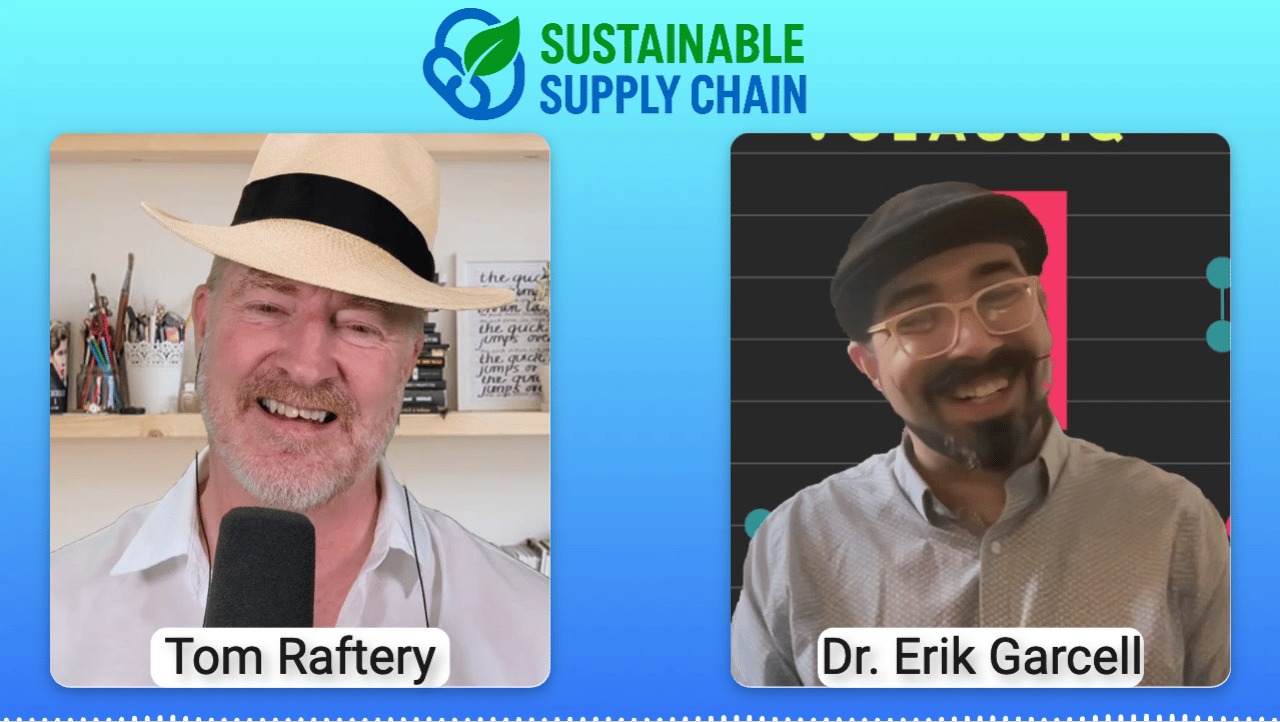
🧬 Quantum Computing: The Next Supply Chain Superpower?
In this week’s pod, I sat down with Erik Garcell, Director of Quantum Enterprise Development at Classiq, to find out why quantum computing might just become the ultimate optimisation engine for supply chains. Spoiler alert: it’s not about replacing your laptop, it’s about solving problems so complex your current systems are basically doing long division with crayons.
Key Highlights:
Quantum can dramatically accelerate optimisation tasks like rerouting shipments, dynamic logistics, or real-time resource allocation.
It’s already being used by firms like BMW and Rolls-Royce for energy efficiency and digital twin simulations with amazing outcomes.
You don’t need a physics PhD to get started, tools like Classiq let regular engineers build quantum programs without melting their brains.
Why This Matters: Quantum could soon help supply chains adapt to shocks in real time, cut emissions, and simulate complex systems, all while running on cloud platforms you already use.
Kismet: One early use of quantum in supply chains? Simulating EV battery chemistry to reduce charging times and increase energy density, a double win for logistics and decarbonisation. 🎧 Listen to the full episode
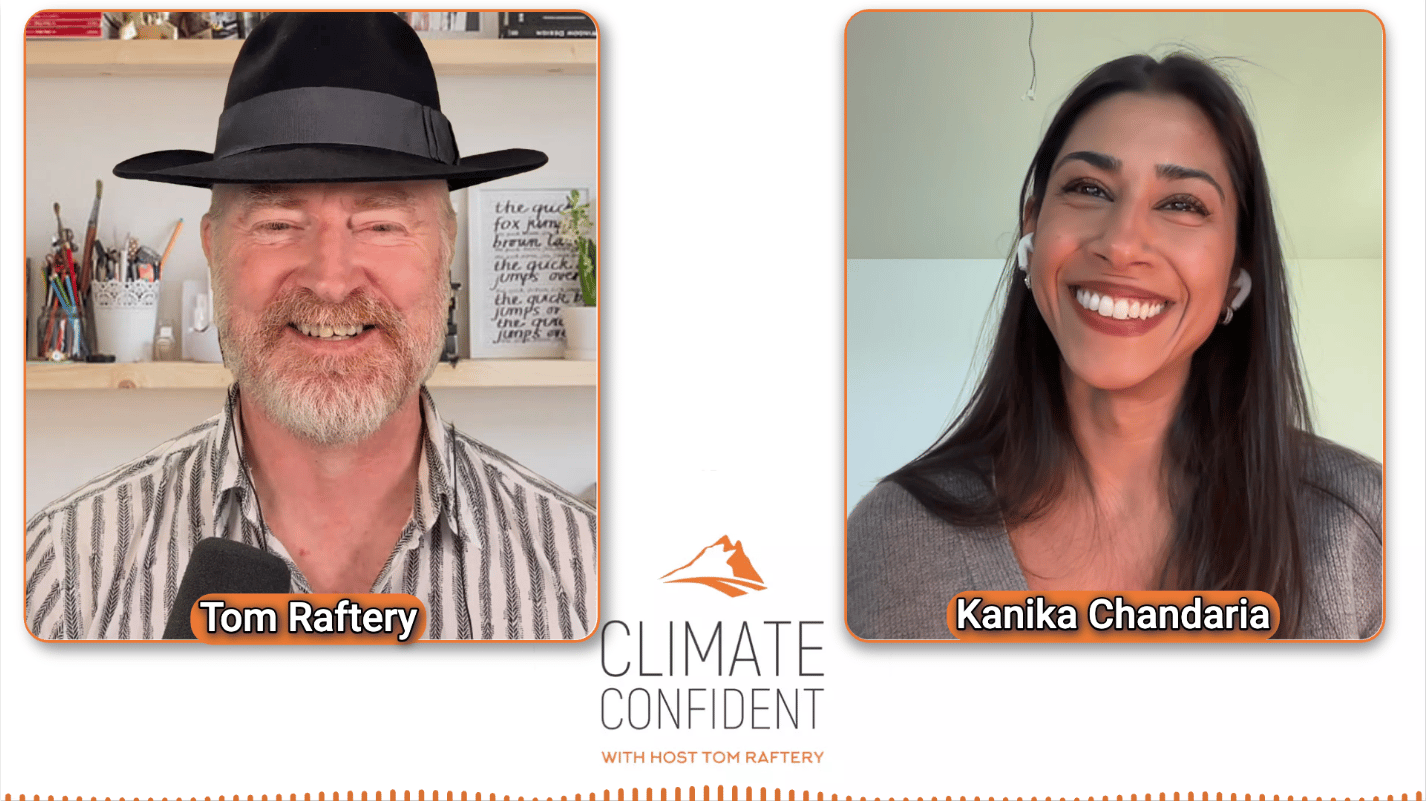
🌾 This Dirt Can Save the Planet (Yes, Really)
In this episode, I spoke with Kanika, climate lead at Agreena, Europe’s largest regenerative agriculture platform, and we got properly stuck into why soil might just be our best shot at gigaton-scale carbon removal. Turns out, regenerative agriculture isn’t just about nicer tomatoes, it’s about rebuilding our food system and putting billions of tonnes of carbon back where it belongs: under our feet.
Key Highlights:
Soils have the potential to sequester 2–5 gigatonnes of CO₂ per year, more than direct air capture could dream of at this point.
Agreena uses AI and satellite data to measure soil health and carbon, building trust in soil-based credits and enabling sustainable finance.
Regenerative agriculture also improves biodiversity, food security, and drought resilience, all without billion-dollar tech.
Why This Matters: If we’re serious about hitting net zero and feeding a growing planet, we need to stop ignoring the climate solution growing silently beneath us.
Kismet: Kanika dropped this stat: soils can store three times more carbon than the atmosphere. And yet we talk about them less than flying taxis. Madness. 🎧 Listen to the full episode
Coming Soon to the podcasts
In upcoming episodes of the podcasts I will be talking to Matt Trubow, Commercial Director of Hidden, and Ori Shaashua, Co-founder and CCO of Gigablue.
Don’t forget to follow the podcasts in your podcast app of choice to ensure you don’t miss any episodes.
Featured Charts
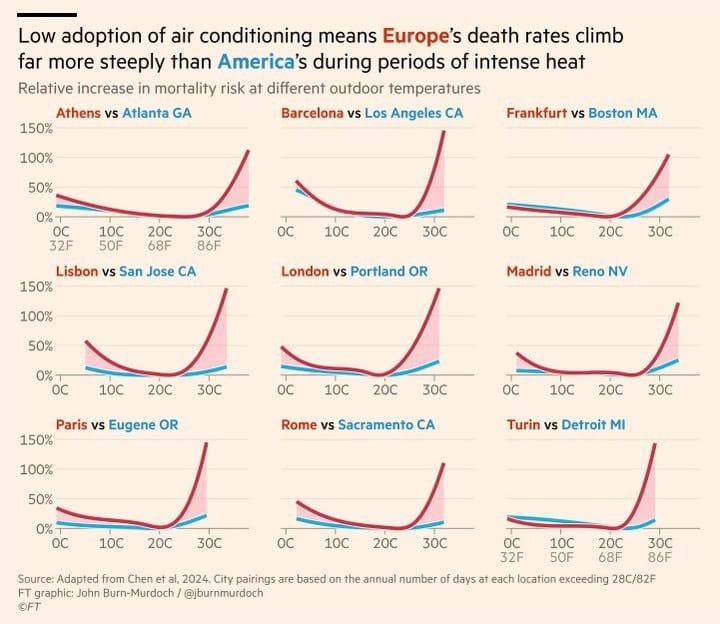
Many European homes lack aircon, and this has lethal consequences when the weather gets hot. Incredibly here in Spain only 41% of houses have air conditioning!
Misc stuff
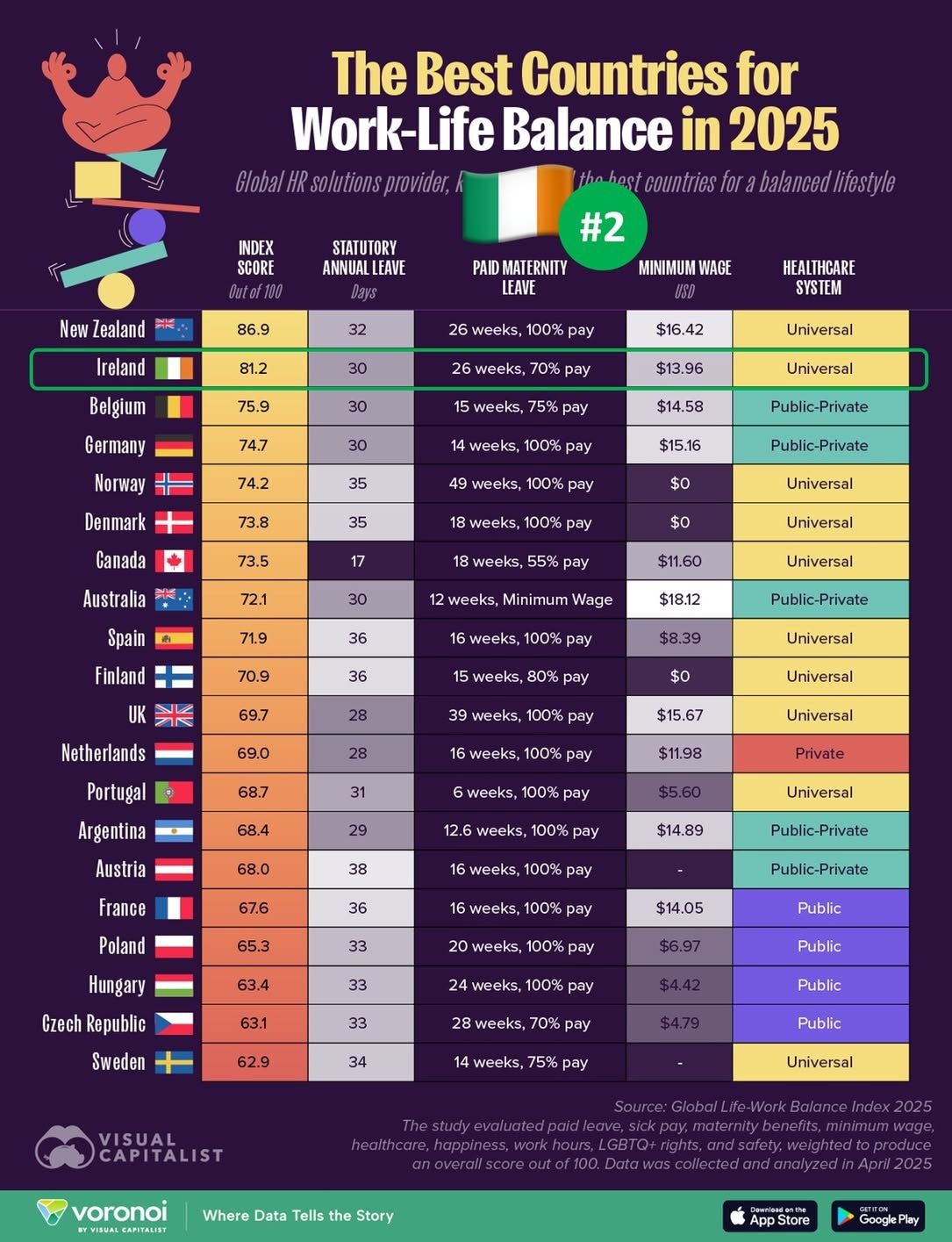
Looking to move countries? Here is a list of countries ranked by work/life balance.
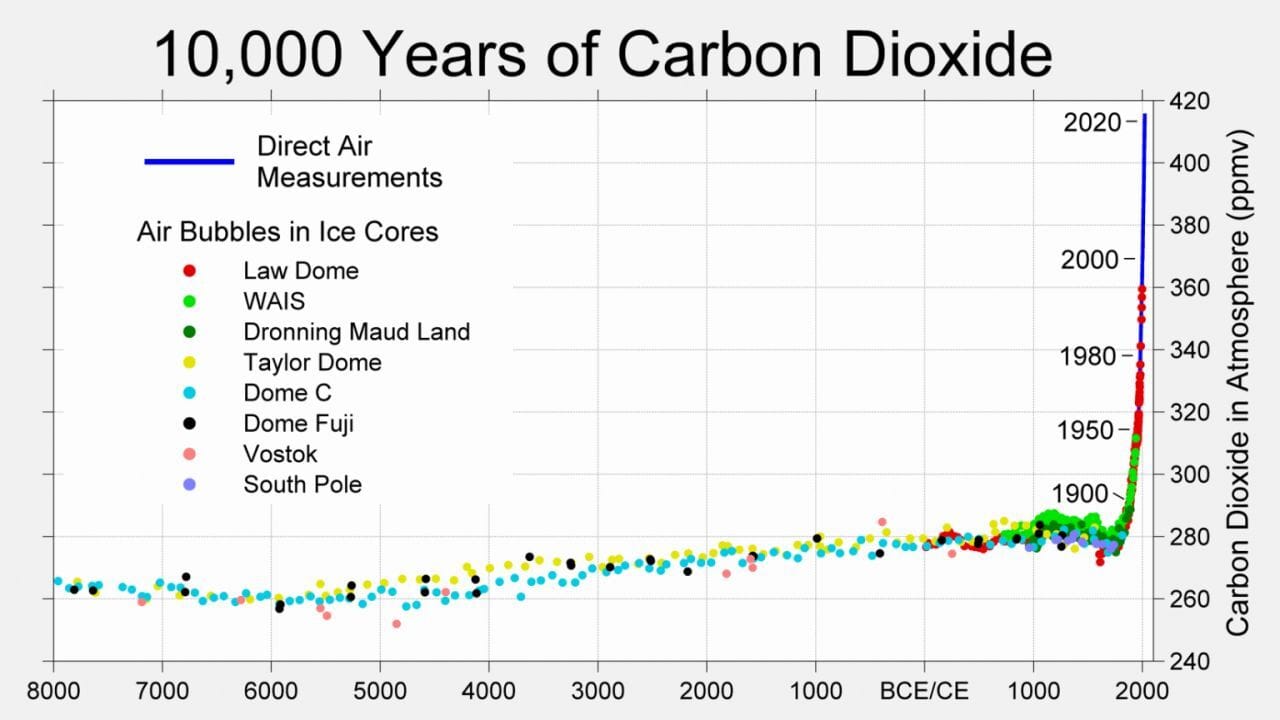
CO2 levels in the atmosphere were between 260-280ppm for 10,000 years until we started burning fossil fuels. Now they’re at 430ppm, and rising.
Engage
If you made it this far, very well done! If you liked this newsletter, or learned something new, feel free to share this newsletter with family and friends. Encourage folks to sign up for it.
Finally, since being impacted by the tech layoffs, I'm currently in the market for a new role. If you know someone who could benefit from my tech savvy, sustainability, and strong social media expertise, I'd be really grateful for a referral.
If you have any comments or suggestions for how I can improve this newsletter, don’t hesitate to let me know. Thanks.
*** Be aware that any typos you find in this newsletter are tests to see who is paying attention! ***
Should I change this email's format?
And Finally
Donald diagnosed with vain condition!
